|
Most everywhere, oceans rise and fall twice a day to produce
tides. The two sets of tides are the result of two oceanic
bulges, one on either side of theglobe. As the Earth rotates,
it passes through these heaps of water, causing the sea above
any given point on the seafloor to rise when the point
approaches the bulge and to fall when it leaves..
The bulges are caused by two forces: gravity and centrifugal
force.
|
|
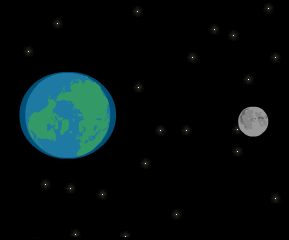
|

|
|
If the Earth and moon could be held in place, the moon's
gravity would pull the oceans toward itself, creating a bulge
of water on the side closest to the moon.
|
|

|

|
|
But the Earth and moon are not stationary. Though we might
think of our satellite revolving aroundour planet, the Earth
and moon actually both revolve around their common center of
gravity. This is a point located within the Earth, about 1,070
miles from the surface (about one quarter the distance to the
center).
|
|
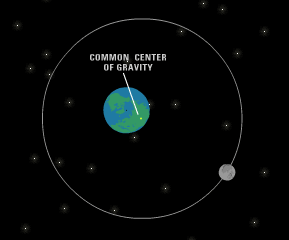
|

|
|
The Earth's motion around the common center of gravity causes
matter in and on the Earth, including its oceans, to move
outward.
This outward-directed force is call centrifugal force.
|
|
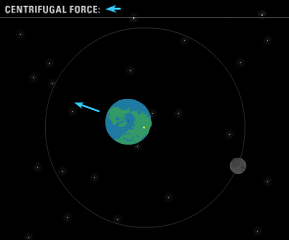
|

|
|
Because the common center of gravity is located between the
Earth's center and the moon, the bulge caused by the Earth's
motion around this center is always on the side opposite the
moon.
If the Earth moved in this way without the influence of the
moon's gravity, the oceans would bulge only on the side of the
Earth away from the point it spun around.
|
|

|

|
|
The moon's gravity, however, does have influence. The strength
of this gravity depends on distance.
The Earth's surface on the side facing the moon is 8,400 miles
closer to the satellite than its surface on the side opposite
to the moon. So the pull of gravity is stronger on the side
closer to the moon.
|
|
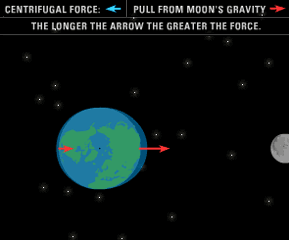
|

|
|
The moon's gravity on the nearside of the Earth is strong
enough to overcome the outward-moving centrifugal force and
pull the ocean towardthe moon. On the other side of the Earth,
however, the moon's gravity is not strong enough to overcome
the centrifugal force.That's why the oceans on the opposite
side also bulge outward.
|
|

|

|
|
Since there are two bulges, most places on Earth experience
two high tides each day as the globe rotates through each
bulge. Yet at certain times, some locations on our planet may
host only a single high tide in a day. See
Tidal Curiosities
to find out why and to learn about other tidal anomalies, such
as the role the sun has on tides.

|
|
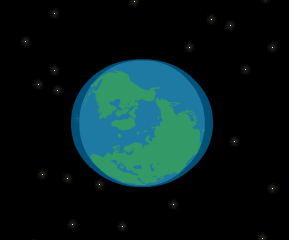
|

|

